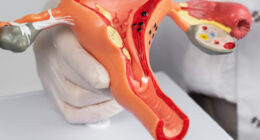Breast health is a crucial aspect of overall well-being for women. Regular self-examination and awareness of changes can help detect potential issues early. While many breast changes are normal and benign, some may require further evaluation. Here are key breast changes that may need another look.
1. Lumps or Masses
Finding a lump in your breast can be alarming, but not all lumps are cancerous. Many are benign conditions like cysts or fibroadenomas. However, having any new lump evaluated by a healthcare provider to rule out malignancy is essential. A mammogram, ultrasound, or biopsy may be recommended.
2. Changes in Breast Shape or Size
Any noticeable change in the size or shape of your breasts should be taken seriously. This includes swelling, shrinkage, or a visible difference between the breasts. These changes can be due to hormonal fluctuations, infections, or more serious conditions like breast cancer.
3. Skin Changes
Pay attention to any changes in the skin on your breasts, such as dimpling, puckering, or the appearance of an orange-peel texture (peau d’orange). These symptoms can indicate underlying issues like inflammatory breast cancer, which requires prompt medical attention.
4. Nipple Discharge
While some nipple discharge can be normal, particularly if it occurs in both breasts, spontaneous or persistent discharge, especially if it’s bloody or clear, warrants a medical evaluation. This could be a sign of infection, hormonal imbalance, or breast cancer.
5. Nipple Inversion or Retraction
If one or both nipples suddenly become inverted or retracted, and this is a new change, it should be checked by a healthcare provider. This change can sometimes indicate breast cancer or other underlying conditions.

6. Breast Pain
Breast pain is common and often related to menstrual cycles, hormonal changes, or benign conditions. However, persistent, severe, or localized pain not associated with your menstrual cycle should be evaluated. While breast cancer isn’t typically painful, any unusual pain should be investigated.
7. Redness or Rash
Red, inflamed skin or a persistent rash on your breast can be signs of infection, such as mastitis, or more serious conditions like inflammatory breast cancer. A thorough medical examination is necessary if these symptoms don’t improve with standard treatments.
8. Swelling in the Armpit or Collarbone Area
Swelling or lumps in the armpit or collarbone area can indicate the presence of swollen lymph nodes, which might be a sign of infection or breast cancer spreading to lymph nodes. These symptoms should be promptly evaluated by a healthcare provider.
9. Changes in Breast Veins
Visible changes in the veins of your breasts, such as prominent veins that were not previously noticeable, can be a sign of increased blood flow to the area due to infection, inflammation, or more serious conditions. This warrants further investigation.
10. Itching or Scaling
Persistent itching, scaling, or flaking of the nipple or breast skin can sometimes indicate Paget’s disease of the breast, a rare form of breast cancer. These symptoms should be evaluated, especially if they don’t improve with topical treatments.
11. Thickening of Breast Tissue
If you notice a distinct area of thickened tissue that feels different from the rest of your breast, it’s important to examine it. This can sometimes indicate breast cancer or other underlying issues.
12. Unexplained Changes During Menopause
Hormonal changes during menopause can cause various breast changes, but any unusual or persistent changes should be evaluated. Postmenopausal breast changes can sometimes indicate more serious conditions that need medical attention.
13. New Moles or Spots
New moles or spots on the breast skin should be monitored. While these are often benign, any rapid changes in size, shape, or color should be checked by a healthcare provider to rule out skin cancer.
14. Nipple Changes During Pregnancy
Pregnancy brings about many changes, including in the breasts. However, any unusual nipple changes or persistent pain should be evaluated to ensure there are no complications.
15. Family History of Breast Cancer
If you have a family history of breast cancer, any breast changes should be promptly evaluated. Genetic factors can increase your risk, and early detection is crucial.
Conclusion
Being proactive about breast health and monitoring for any unusual changes can make a significant difference in early detection and treatment of potential issues. While many changes are benign, it’s important to consult with a healthcare provider to rule out serious conditions. Regular screenings, such as mammograms, and maintaining awareness of your breast health are key steps in ensuring your well-being.









